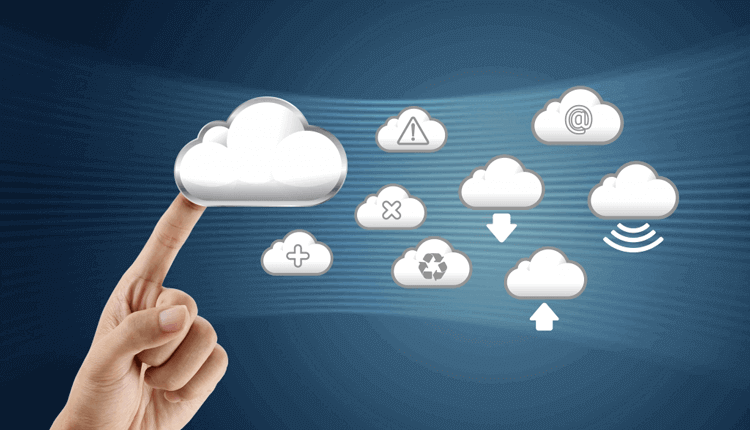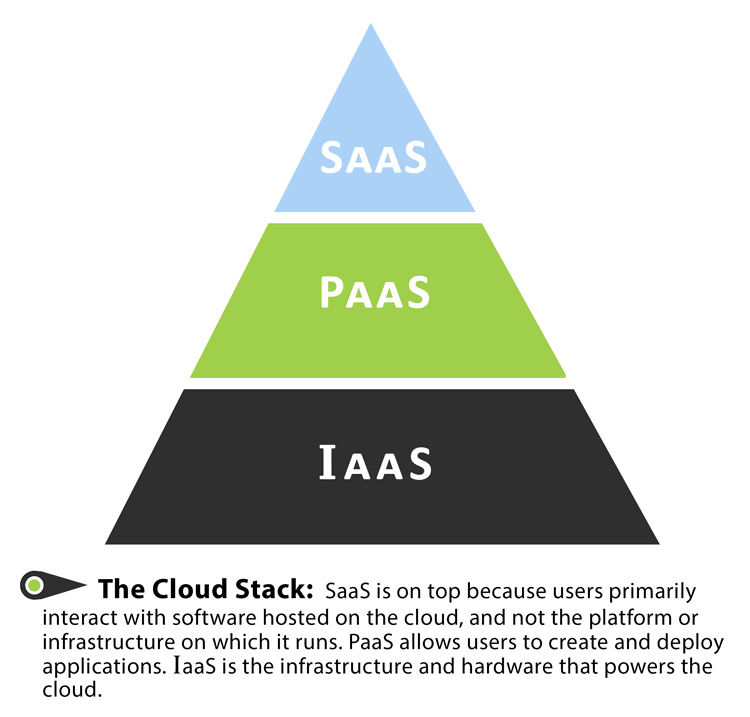3 Main Types of Cloud Computing: IaaS vs. PaaS vs. SaaS
The "Cloud" is everywhere today in technology. Whether it is data storage, or communicating with colleagues and friends, many apps and devices interact with the cloud. But what makes up the cloud?

What is the Cloud Computing Stack?
Cloud computing can be broken up into three main services: Infrastructure-as-a-Service (IaaS), Platform-as-a-Service (PaaS) and Software-as-a-Service (SaaS).
These three services make up what commonly called the Cloud Computing Stack, with SaaS on top, PaaS in the middle, and IaaS on the bottom. SaaS is on the top of the stack because users interact primarily with software hosted on the cloud, and not the platform or infrastructure on which it runs. PaaS allows users to create and deploy applications. IaaS is simply the infrastructure and hardware that powers the cloud.

The Rackspace article uses a transportation analogy to help visualize each section: the series of roadways and highways represents IaaS, the cars and trucks driving on the roadways represents PaaS, and the goods and people represent SaaS. Without people, the cars and trucks could not go anywhere, and without cars and trucks, the roadways would be useless. Each service builds on each other for a complete experience, but can be interacted with separately as needed.
Infrastructure-as-a-Service (IaaS)
IaaS allows users to rent the infrastructure itself: servers, data center space, and software. The biggest advantage of renting, as opposed to owning, infrastructure is that users can scale up the amount of space needed at any time. During busy holiday seasons, online retailers may require more server space to handle the heavy traffic than in the off-season. Using IaaS allows the retailer to save money by only paying for what they will use within a certain time frame.
Platform-as-a-Service (PaaS)
PaaS allows developers to create applications, collaborate on projects, and test application functionality without having to purchase or maintain infrastructure. Development platforms can be accessed as long as there is an internet connection, allowing team members to stay connected and keep working.
Software-as-a-Service (SaaS)
When a company wanted to purchase new software in the past, it could be a very expensive and time consuming process. But with SaaS, software can be quickly deployed, since it is already installed on the cloud server. As with PaaS, users only need access to a computer with internet connection to use the software, and they never have to worry about upgrading or patching the software. SaaS can reduce costs, since users only pay for exactly what is needed and do not have to maintain the software.
Together, these three types of cloud computing services can work together to save companies time and money in deploying and maintaining hardware and software, and can keep users connected and working collaboratively, even in a global way.
Since 1999 (before it was even called cloud computing!), Giva has offered a wide variety of Software-as-a-Service solutions, including customer service, IT help desk, asset management, knowledge management, and IT change management. Each of these solutions is easily deployed, highly customizable, and delivers robust reports for high quality decision-making. Giva's software is also HIPAA compliant to ensure that sensitive patient information is secure for clients in healthcare.


